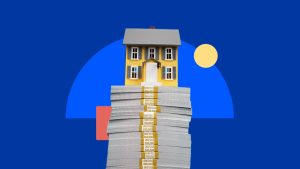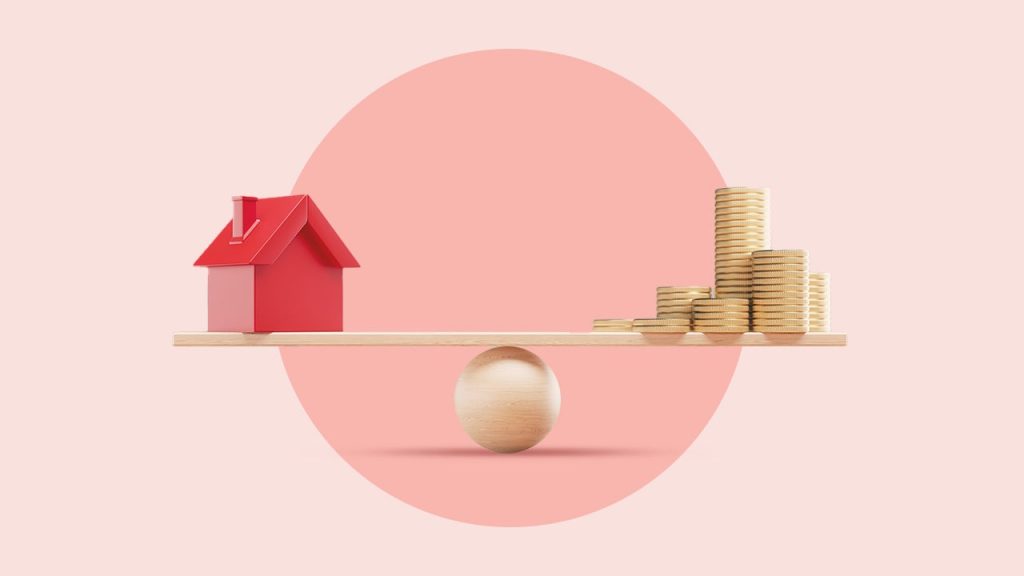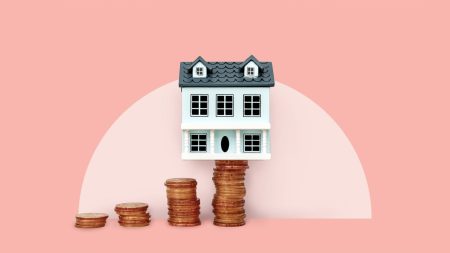Photography by Getty Images; Illustration by Bankrate
If you’ve been watching mortgage rates hover near 7 percent this year, you’re probably feeling frustrated.
The dream of homeownership feels more expensive than ever. And for many prospective buyers, purchasing when rates are high means stretching their budget, settling for less house than they want or risking financial strain.
But here’s what many buyers don’t realize: High mortgage rates actually create an opportunity for savers. As someone who has analyzed housing market cycles and interest rate trends for over 10 years, I can tell you that now is the perfect time to pause your home search and put your money into a high-yield savings account instead.
The reason? Mortgage rates and savings rates are connected. When one goes up, the other typically follows. That means you can earn more on your savings while you wait for better borrowing conditions.
Why rising mortgage rates mean it’s time to save
Both mortgage rates and savings rates respond to the same economic forces. When the Federal Reserve raises its benchmark interest rate, borrowing costs rise across the board. This typically pushes up mortgage rates as well as the yields banks offer on savings accounts and certificates of deposit.
Academic research backs up this connection. A 2022 study using Federal Reserve data found a statistically significant relationship between mortgage rates and personal savings rates. As mortgage rates increase, savings rates typically rise, too.
This connection isn’t perfect — mortgage rates are generally longer-term and more directly tied to bond markets, while savings rates are more responsive to short-term rates and bank competition. Still, the broader trend holds: When mortgage rates rise, so do savings yields.
That gives consumers a great reason to park cash in savings rather than stretch for a home purchase during periods of high borrowing costs.
How a strategic pause can put you in a stronger financial position
Taking time to build your savings instead of rushing into a purchase offers a few advantages.
Your money earns more while you wait
When mortgage rates are high, banks and credit unions historically offer higher yields on savings accounts and CDs.
Right now, many high-yield savings accounts offer rates above 4 percent. That means your down payment fund can actually grow while you wait for better market conditions.
A bigger down payment improves your mortgage terms
The more you can put down, the better your loan terms become. If you already have enough for a down payment, increasing the size of that down payment can help you qualify for a lower mortgage interest rate, avoid private mortgage insurance and reduce your monthly payments. That’s a win-win.
You’ll also have more negotiating power with sellers.
You’ll keep your options open
Having your money in a savings account that you can access at any time gives you flexibility and peace of mind. By keeping your funds liquid, you’re ready to move quickly when rates fall or the right home comes along.
You can also use the funds if there’s an emergency, job loss or other life event that requires a large amount of cash. You can simply pull that money out of the bank rather than having to take on debt or borrow against your home.
Why not buy now? Patience pays
Let’s put it in perspective, using the example of a $400,000 home purchase, assuming you put down 9 percent (the median down payment for first-time homebuyers in 2024, according to the National Association of Realtors).
Monthly payment comparison
| Mortgage rate | Monthly payment (P&I) | Monthly savings compared to 7% rate | Annual savings compared to 7% rate |
|---|---|---|---|
| 7.0% | $2,421.70 | – | – |
| 6.5% | $2,300.73 | $120.97 | $1,451.64 |
| 6.0% | $2,182.36 | $239.34 | $2,872.08 |
| 5.5% | $2,066.75 | $354.95 | $4,259.40 |
Based on principal and interest only
The difference is significant. If rates drop from 7 percent to 6 percent, you’ll save over $200 per month. Over the lifetime of the loan, you’ll save over $85,000 on interest payments. Most mortgage rate forecasts for 2025 don’t expect rates to drop below 6 percent.
Meanwhile, if you park your down payment in a high-yield savings account earning 4.5 percent APY, you could add hundreds or even thousands of dollars to your homebuying budget in just a year or two if rates stay high.
| Down payment fund | Interest earned in one year | Interest earned in two years |
|---|---|---|
| $10,000 | $450.00 | $920.25 |
| $25,000 | $1,125.00 | $2,300.62 |
| $50,000 | $2,250.00 | $4,601.25 |
Calculate your potential savings growth with Bankrate’s compound interest calculator.
Your action plan for building savings
- Open a high-yield savings account: Look for accounts with competitive rates, no monthly fees and easy access to your funds. Online banks typically offer the best yields — often 10 to 15 times higher than traditional banks.
- Automate your savings: Set up automatic transfers to keep your home fund growing.
- Monitor mortgage rates: Use Bankrate’s tools to track rate changes so you’re ready to act when the market shifts.
- Stay ready: Keep your paperwork and credit in good shape so you can move fast when the time is right.
When should you jump back in?
Keep an eye on mortgage rate trends. Experts predict rates may gradually decline later in 2025 or into 2026, but there’s been a lot of volatility already this year. When rates start to fall meaningfully, you’ll be well-positioned, with a bigger down payment and a stronger financial cushion, to buy the home you really want.
High mortgage rates don’t have to derail your homeownership dreams. Instead, see them as a sign to pause, grow your savings and prepare for a smarter purchase down the road. By putting your money to work in a high-yield savings account now, you’ll be ready to make your move when the market turns in your favor.
Read the full article here









